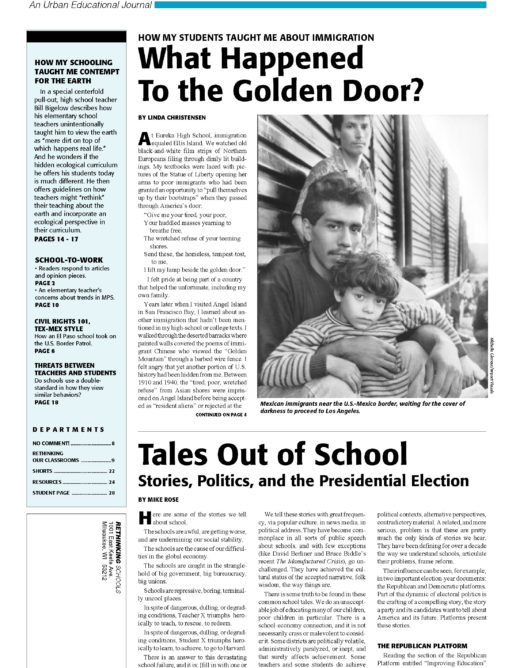MPS Screening a Step Backward

Should school boards develop policies that concentrate on the needs of high-achieving students, at the expense of students who are not doing as well?
Should the ability to go to the high school of one’s choice be a “reward” for students who have shown “hard work, effort and responsible behavior”? Or should all students have the right to attend a quality high school?
If high schools are not allowed to screen students for academic reasons, should they be able to do so for behavioral reasons?
These are some of the controversial issues involved in the new high school admissions policy passed by the Milwaukee School Board. Under the new policy, high schools will be able to give admission preference to those students with a 90% attendance rate in the first semester of eighth grade. Excused absences will not be factored in.
The resolution re-opened a long-standing debate within the MPS board over the desire of some specialty schools, in particular the Rufus King School for the College Bound, to institute admission requirements. In the past, the board has always defeated such attempts on the grounds that it is committed to reducing, not increasing, the tracking of students.
One of the most-often used phrases in education is that schools should serve the needs of all students. This resolution unequivocally contradicts such a stance. Instead, it argues that schools should give preference to those kids who are already doing well, and give lectures to those who aren’t. The end result of such a policy approach is clear: the solidification of a two-tiered high school system rather than its complete elimination.
Like so many other educational policies that favor some students over others, tracking is like a many-headed Hydra. Just when you think you have it defeated, it rears its head in another form. This time, it reared its head in the form of attendance.
We have no doubt that the resolution was about screening and tracking, not about attendance. At the same time, the controversy provides a chance to spur the school board to develop a far more comprehensive approach to improving attendance.
As a first step, the board majority must drop its perspective that attendance is merely a problem to be resolved by each individual student. Clearly, students must learn individual responsibility. But the board majority, in its inability to look for more systemic causes of poor attendance, advocates a one-sided answer to a complicated question.
Having turned attendance into a high-stakes screening device,the board now has the responsibility to work with the administration to look at systemic reasons for truancy, and to make necessary policy changes that will focus on the needs of those who are not attending.
The reasons for poor attendance are as varied as the students themselves. Often it is because the students think school is boring — and often, they are right. Often it is because the students don’t get along with their teachers. Often it is due to family problems, such as the need to take care of younger siblings. Sometimes it is a misguided attempt at adolescent rebellion. Sometimes it is because students are so alienated from school and from society that they don’t think it will make any difference whether they attend their classes.
Attendance is critical to academic success, and MPS must do everything in its power to make sure students are in school. But we must be careful that we do not transform students who show unacceptable behavior, such as chronic absenteeism, into unacceptable students. Students who are habitually absent are not,as one school board member argued, to be lumped together with drop-outs and criminals. They are students who need help.
If the school board is serious about wanting to serve all students, it has the responsibility to figure out how to provide the help such students need.

